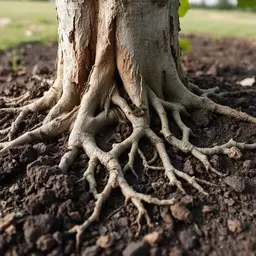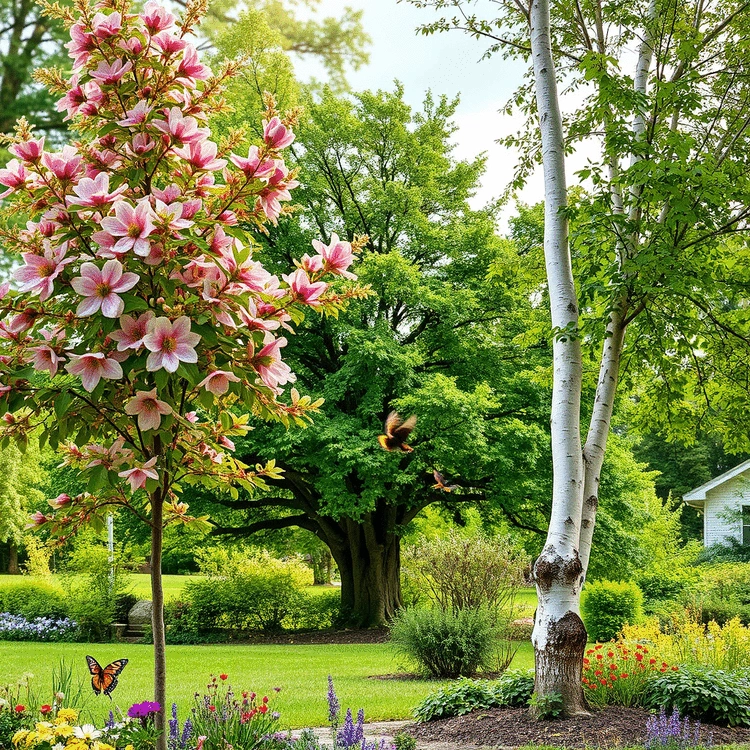
- Root Care
- Aug 05
2025-07-15
Creating a garden that supports wildlife isn't just about aesthetics; it's a vital step toward ecological sustainability. Did you know that incorporating wildlife-friendly trees can dramatically enhance the biodiversity of your garden? This article dives into the importance of planting trees that attract wildlife and how they contribute to a balanced ecosystem.
Observe how different tree species interact with wildlife across the seasons. For more details on selecting trees for your garden, consider the specific needs of local wildlife.
Trees bloom, attracting bees and migrating birds.
Foliage provides shade and shelter for small mammals and nesting birds.
Fruit and seeds become food sources for birds and squirrels.
Bark and branches offer shelter for various species during colder months.
Creating a garden that welcomes wildlife is not just a trend; it’s a meaningful way to foster ecological balance. By planting trees that attract wildlife, we can support local ecosystems and encourage biodiversity. This connection between our gardens and the broader environment is vital for sustaining the intricate web of life surrounding us. Let’s explore why these trees are so crucial!
One of the most compelling reasons to include wildlife-friendly trees is their ability to enhance biodiversity. When we cultivate a diverse range of plant life, we make our gardens more robust and resilient against pests and diseases. Each tree species plays a unique role, providing habitats and food sources for various creatures, from bees to birds to mammals. By supporting local wildlife, our gardens not only become more vibrant but also contribute to the overall health of our environment.
Planting trees that attract wildlife helps create natural habitats that support local species. These trees act as native havens, providing essential resources such as food and shelter. As a horticulturist, I find joy in watching the thriving life that springs from a well-planned garden.
Moreover, incorporating these trees into your garden can lead to educational opportunities. Observing how wildlife interacts with these plants can deepen our understanding of ecological relationships. It's a wonderful experience to witness how each species contributes to the ecosystem, fostering a sense of stewardship for our natural world. For more on how to care for your trees, consider our guide on essential tree care and landscaping.
Choosing native trees is particularly beneficial for our gardens. These trees have evolved alongside local wildlife, creating a natural synergy. They’re often better adapted to local climates and soils, leading to healthier and more sustainable growth.
At Deep Roots Journal, I emphasize the importance of native species. They’re not just trees; they’re integral parts of our local ecosystems. Planting native trees not only enhances the beauty of our gardens but also promotes a thriving community of wildlife that can flourish alongside us.
To create a wildlife haven, it's essential to choose the right tree species. Some trees are particularly effective in attracting birds, pollinators, and even mammals to your garden. Let's dive into some top choices that will invite these creatures into your space!
Here's a brief recap of the key points discussed so far:
When you decide to plant trees that attract wildlife in your garden, it’s essential to nurture them properly. Not only do these trees enhance the beauty of your outdoor space, but they also support local ecosystems. By following a few simple care tips, you can ensure that your trees remain healthy and continue to offer vital habitats for birds, pollinators, and other wildlife.
Pruning is a critical aspect of tree care, helping to maintain their structure and health. Regular pruning not only removes dead or diseased branches but also encourages new growth, which is essential for attracting wildlife. Here are some effective pruning and maintenance techniques to support your trees:
By keeping up with these maintenance practices, you can help your trees thrive, which in turn supports the wildlife that depends on them for food and shelter. Remember, a well-cared-for tree can make a significant difference in your garden's ecosystem! To learn more about fostering healthy roots, explore our guide on encouraging healthy root development.
Managing pests in your garden can be tricky, especially when you want to protect beneficial wildlife. It’s crucial to choose pest management strategies that minimize harm to your trees and the creatures that rely on them. Here are some effective and eco-friendly pest management strategies:
By implementing these strategies, you can create a balanced ecosystem in your garden where both trees and wildlife can flourish. A healthy tree not only provides shade and beauty but also serves as a valuable resource for the creatures we cherish.
As the seasons change, so do the ways wildlife interacts with the trees in your garden. Taking the time to observe these interactions can deepen your appreciation for nature and inform your gardening practices. For instance, trees like the eastern cottonwood and black walnut offer different benefits throughout the year:
Understanding these seasonal interactions helps you make informed decisions about which trees to plant and how to care for them. Each tree species has its own story, and monitoring these relationships can be both educational and rewarding!
Creating a welcoming environment for wildlife visitors is all about thoughtful design and plant selection. Certain tree species can enhance these interactions and invite a variety of creatures into your garden. Here are some tips to encourage positive wildlife interactions:
As you work toward creating a wildlife-friendly garden, remember to celebrate every visitor, big or small! Engaging with the wildlife in your space can lead to a richer gardening experience and a deeper connection to our natural world.
Designing a garden with wildlife in mind goes beyond just planting a few trees. It's about creating a sustainable habitat that balances aesthetic appeal and ecological function. Here are some principles to consider when developing your wildlife-friendly garden design:
By following these steps, you can create a vibrant, engaging space that not only looks beautiful but also supports the local ecosystem. Every tree you plant and every design decision you make can have a lasting impact on wildlife in your garden.
Are you ready to make a difference for wildlife in your garden? It’s easier than you might think! Start by selecting native trees like sugar maple and catalpa, which are excellent choices for attracting birds and pollinators. As you plant, consider how you can create a habitat that encourages wildlife interactions and supports a thriving ecosystem. For more information on native trees for sustainable landscapes, check out our dedicated article.
At Deep Roots Journal, I believe that every small action can lead to significant changes in our environment. So grab your gardening gloves, and let’s start planting for a greener, wilder tomorrow!
Here is a quick recap of the important points discussed in the article:
